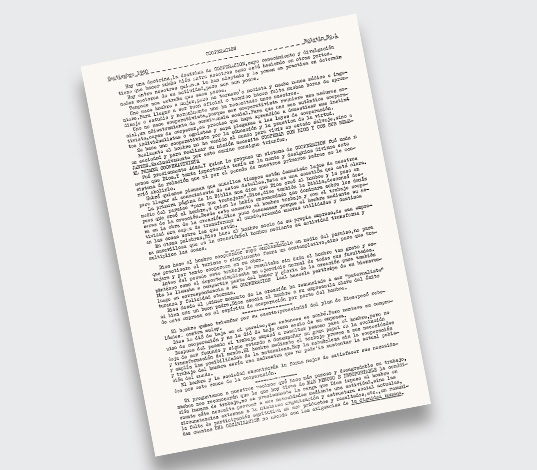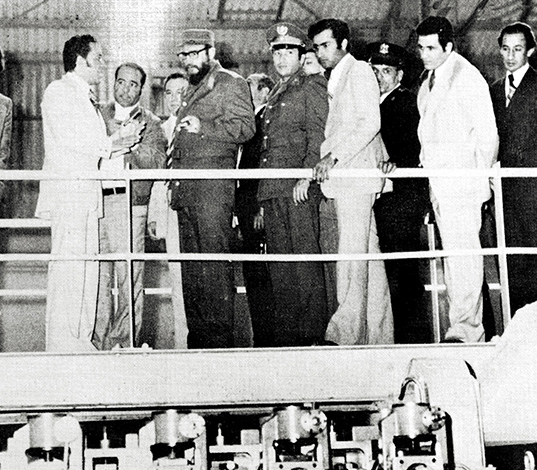On 14th April 1956, whilst many people of Mondragón were discreetly and rather warily celebrating the 25th anniversary of the Second Republic, Father José María Arizmendiarrieta was blessing the foundation stone of Ulgor, a company with a name which drew together the identity of the founders: Luis Usatorre, Jesús Larrañaga, Alfonso Gorroñogoitia, José María Ormaechea and Javier Ortubay.
They had to wait almost three years until May 1959, as Jesús Larrañaga recalls in the introduction, for the first bylaws of Talleres Ulgor to be approved.
Father Arizmendiarrieta and Ormaechea went on foot from the old building of the Escuela Profesional, today Mondragon Eskola Politeknikoa, to the piece of land known as Laxarte, where they had already bought a plot for 27 euro cents (45 pesetas) per square metre. Ormaechea was in charge of methodically measuring out the plot and a fortnight later building work started on the MONDRAGON Experience’s first production plant: a 750m2 two-storey concrete structure.
































